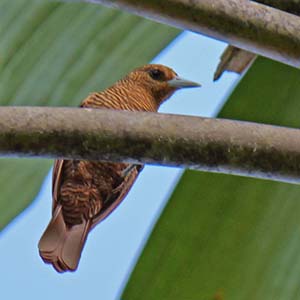

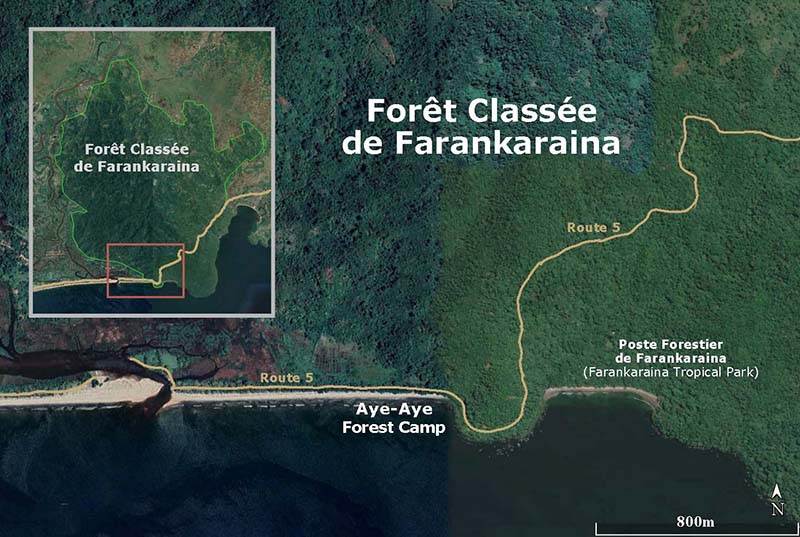 |
|
The Farankaraina Forest is possibly the best place in the Bay area, and one of the best in all of Madagascar, to see the unique and endangered aye-aye in the wild. There are estimated to be less than 10,000 aye-aye alive in the world today. Most of the other places where you can see aye-aye feature either captured or habituated and artificially fed animals in a disturbed or non-native habitat. Farankaraina contains perfect native habitat for aye-aye, with many towering Canarium and Intsia trees, Ravenala palm trees, and a wide variety of other native trees and shrubs.
Farankaraina is also home to about 100 species of birds, 8 species of lemurs, and a host of insects, amphibians, reptiles and chameleons. See the Wildlife page for a pictorial list of some of the flora and fauna in Farankaraina. In addition, the Farankaraina summit has the best view in the Bay area and is an ideal spot overlooking the forest.
The Aye-Aye Forest Camp is located on Antongil Bay at the edge of the 2,770 ha Forêt Classée de Farankaraina (Farankaraina Classified Forest). It is an ideal launch point for visiting the Antongil Bay area as it is easily accessible (less than an hour) by boat from Maroantsetra, and access is not subject to bad weather which can entail a rough or possibly dangerous ocean crossing.
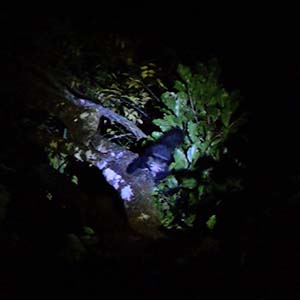




 |
|
The Antongil Bay area is recognized for its biodiversity and as one of the world’s highest concentrations of endemic species. It is estimated that the Antongil Bay area contains 50% of Madagascar’s biodiversity while covering only 2% of its land mass. This is significant given that 90% of Madagascar’s wildlife is endemic! There are many species that only exist in the Antongil Bay area or a portion of the area, and the forests are some of the best preserved in all of Madagascar.
Each of the four areas in the Antongil Bay will provide a unique experience for visitors. The Farankaraina Forest is a transition area between Masoala National Park and Makira Natural Park, and Nosy Mangabe is its own jewel in the Bay.
The small island of Nosy Mangabe is notable because it has been protected since 1965. It is home to a number of rare animal species, most notably the critically endangered black-and-white ruffed lemur, which were introduced to the island specifically for their protection, and is the only place in the bay area where you can see them. This island is also your best bet to see the endangered Brookesia peyrierasi, the second smallest chameleon species.
Your stay at the Aye-Aye Forest Camp includes a visit to Nosy Mangabe as well as the nearby Nosy Fanihy, one of only a few places where you can reliably see Madagascar flying fox.
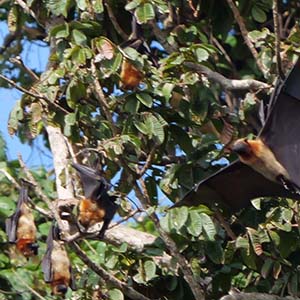
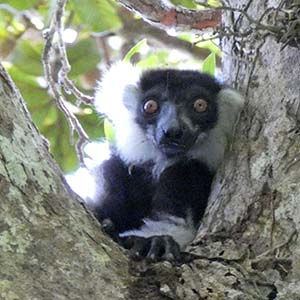

Masoala National Park is Madagascar’s largest national park. It protects a unique ecosystem created by being a narrow peninsula with ocean on both sides and elevations over 1100 meters in the central area. This creates an amazing microclimate with a humid and dense rainforest with prolific plant growth and fruit. Readily available food enables high density populations of insects, amphibians, reptiles, birds, lemurs, and many species that only exist in the (relatively) small area of the Masoala Peninsula.
This is your best bet to see the critically endangered red-ruffed lemur and the endangered helmet and bernier’s vanga. Most of the park is protected and inaccessible to tourists. There are several lodges bordering the east shore of Antongil Bay, and guests to these lodges can access Masoala National Park accompanied by a guide, who will lead them on a network of tourists trails in the park.


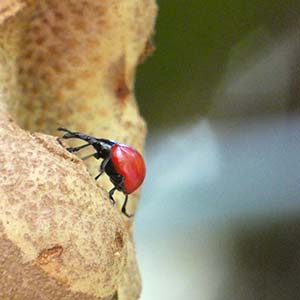
Makira Natural Park is Madagascar’s largest protected area. It protects an inland plateau that features steep rolling hills and high elevation ridges up to 1250 meters, all blanketed with an impressive rainforest. All of the elevation changes cause numerous microclimates with varying temperatures and humidity, which support an estimated 50% of Madagascar's flowering plants and 20 lemur species, more than any other area in Madagascar.
Makira is one of only two places in Madagascar where you can have a chance to see the critically endangered silky sifaka. There are less than 250 of these beautiful primates estimated to be alive in the wild today. In this area, you will also have an excellent chance to see the endangered helmet vanga and the endangered Bernier's vanga.
The conservation of the 370,000 ha Natural Park is managed by WCS (Wildlife Conservation Society) in collaboration with the local communities, and is by and large inaccessible to tourists. There is one remote ecolodge with a few basic bungalows which are accessible after a rugged 2-hour hike. For the adventurous travellers, a guide, cook and porters can be hired to explore this remote area.

